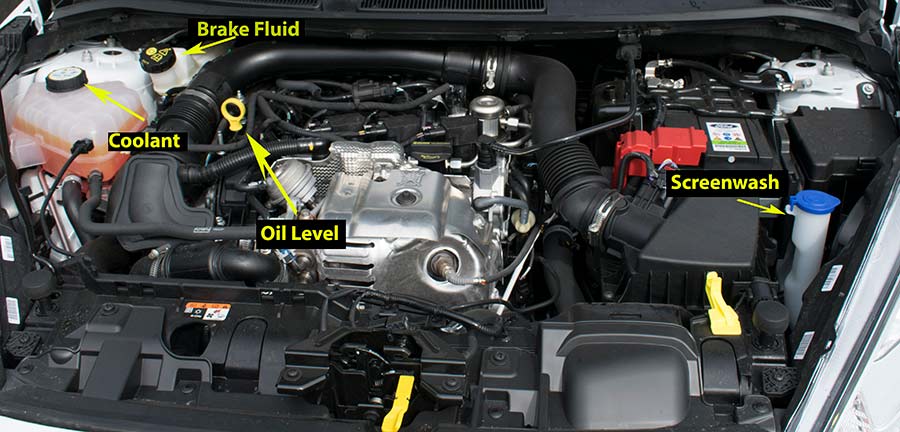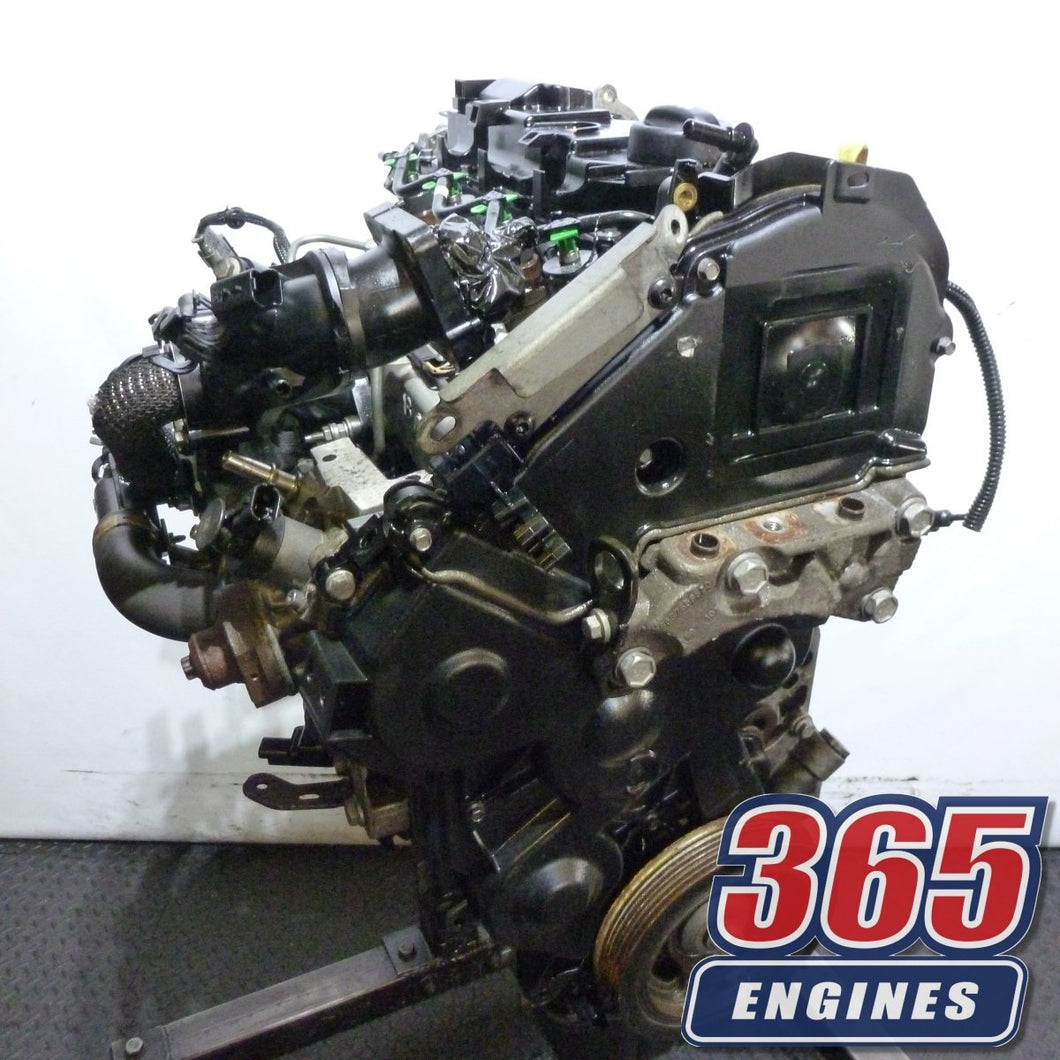How to Diagnose Ford Fiesta Engine Issues and Prevent Future Problems
Wiki Article
Unlocking the Power of Engines: A Comprehensive Overview to Efficiency and Effectiveness
Recognizing the complex technicians of engines is vital for both efficiency lovers and everyday chauffeurs. The solutions might redefine our strategy to engine performance and efficiency in ways that are both enlightening and essential.Comprehending Engine Basics
What constitutes the fundamental auto mechanics of an engine? At its core, an engine is an equipment created to transform fuel right into mechanical energy with a collection of regulated surges or combustion procedures. The main parts consist of the cyndrical tube, piston, crankshaft, camshaft, and shutoffs. The cylinder acts as the chamber where combustion takes place, while the piston moves within the cyndrical tube to transform the energy from burning right into straight activity (ford fiesta engine).The crankshaft after that changes this linear activity into rotational energy, which ultimately powers the automobile. The camshaft manages the opening and closing of the valves, managing the consumption of air and fuel and the expulsion of exhaust gases. Furthermore, the engine counts on a meticulously calibrated fuel-air mixture, ignition system, and cooling down system to ensure optimal efficiency and effectiveness.
Recognizing engine essentials likewise involves acknowledging the value of engine cycles, such as the four-stroke cycle, that includes consumption, compression, power, and exhaust strokes. Each phase is crucial in ensuring the engine functions efficiently and properly. Proficiency of these basic auto mechanics lays the foundation for discovering much more complicated engine characteristics and efficiency metrics, crucial for enhancing both power result and efficiency.
Key Efficiency Metrics
Trick performance metrics are essential for evaluating an engine's efficiency and power result, providing useful insights for both consumers and producers. These metrics offer as standards for engine efficiency, enabling notified choices in purchasing, style, and manufacturing.One of the main metrics is horse power, which quantifies the engine's capacity to do job over time. Torque, measured in pound-feet, is one more important statistics that indicates the engine's rotational force, directly impacting velocity and towing ability. Fuel performance, generally measured in miles per gallon (MPG) or litres per 100 kilometers (L/100km), examines just how successfully the engine converts fuel right into activity, affecting functional expenses and environmental considerations.
Furthermore, thermal effectiveness steps how well an engine converts fuel energy right into beneficial job, revealing insights into power losses largely via warm. Exhaust degrees, including carbon dioxide and NOx, are additionally vital, reflecting the engine's environmental effect and compliance with governing requirements.

Tuning Techniques for Efficiency
Tuning techniques play a significant role in boosting engine effectiveness by maximizing efficiency metrics recognized in earlier discussions (ford fiesta engine). Different techniques exist to fine-tune an engine, each contributing to enhanced fuel economy and decreased exhaustsOne reliable strategy is changing the air-fuel ratio, making certain the engine operates within the optimum combustion program. A leaner combination can improve gas effectiveness, but it needs to be balanced to protect against misfires or engine knock. Additionally, reprogramming the engine monitoring system can recalibrate specifications such as ignition timing, which additionally improves efficiency while keeping power output.
An additional important method involves modifying the consumption and exhaust systems. Updating to high-performance air filters and exhaust headers can minimize back stress, facilitating far better air movement. This enables the engine to breathe more openly, leading to improved combustion performance.
Additionally, the execution of advanced tuning devices, like dyno testing, supplies precise information that makes it possible for targeted modifications. Routinely monitoring these performance metrics makes sure that adjusting efforts generate the preferred effectiveness results. Jointly, these strategies not only bolster engine efficiency but also add to long-lasting sustainability in engine procedures.
Upkeep for Optimum Performance
Routine engine upkeep is important for achieving ideal efficiency and long life. A well-maintained engine not just runs successfully but likewise minimizes he said the danger of expensive repair work and break downs. Secret elements calling for routine interest include oil, filters, belts, and ignition system.Altering the engine oil at recommended intervals is important, as oil lubes relocating components and avoids overheating. Replacing oil and air filters ensures that pollutants do not impair engine function. Ignoring these components can lead to minimized performance and prospective engine damages.
Furthermore, examining and changing used belts and hose pipes is important to stop unexpected failings. Timing belts, specifically, ought to be replaced according to the producer's routine to avoid catastrophic engine damage.
Ignition system should also be examined and replaced as required, given that they play a vital role in ignition and fuel effectiveness.
Future Trends in Engine Innovation
Welcoming developments in innovation, the future of engine layout is positioned to revolutionize performance and performance throughout different applications. One of the most significant fads is the change toward electrification. Crossbreed and fully electrical powertrains are coming to be significantly mainstream, offering decreased emissions and enhanced fuel efficiency. This change is not just a need yet a fad driven by governing stress and consumer demand for sustainable services.In addition, technologies in products science are resulting in lighter, stronger elements that enhance engine efficiency while reducing power consumption. Advanced production techniques, such as 3D printing, permit the production of intricate geometries that improve airflow and thermal management, thus optimizing combustion processes.
Additionally, the combination of expert system and artificial intelligence is set to change engine diagnostics and efficiency tuning. These innovations can assess large quantities of information in real time, enabling predictive upkeep and customized performance enhancements.
Verdict
In final thought, opening the power of engines requires a complete understanding of their auto mechanics and performance metrics. Implementing reliable tuning methods and sticking to regular maintenance practices considerably improve engine capabilities.Furthermore, the engine relies on a very carefully calibrated fuel-air blend, ignition system, find out here and cooling down system to ensure ideal performance and performance.
Understanding engine essentials additionally involves identifying the importance of engine cycles, such as the four-stroke cycle, which consists of intake, compression, power, and exhaust useful reference strokes. Proficiency of these essential auto mechanics lays the foundation for exploring more complex engine dynamics and performance metrics, vital for maximizing both power outcome and performance.

Accepting improvements in innovation, the future of engine layout is positioned to revolutionize performance and performance across numerous applications.
Report this wiki page